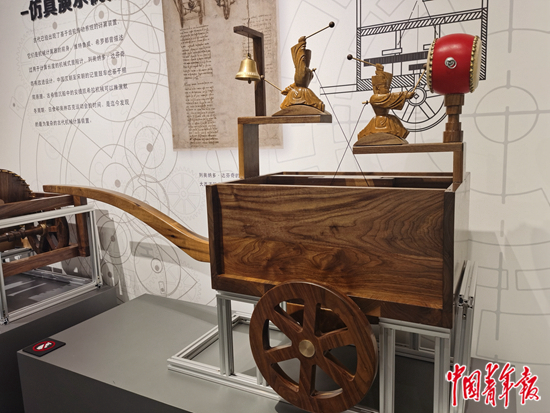
Computing equipment displayed in Tsinghua University Science Museum.
How do humans calculate?
We can often see that children like to break their hands and count. For human ancestors whose evolution degree is not high, fingers have written a landmark first page for the history of human computing.
Not long ago, the first comprehensive science museum in China — — Tsinghua University Science Museum, together with Zimuyuan Museum in Hefei, displayed 80 important computing instruments in the history of the East and the West in three units: operation, cleverness and switching on electricity.
In fact, the museum has collected more than 4,000 pieces of scientific instruments, and has carried out research restoration on famous Chinese and foreign scientific instruments and technological inventions with written records that have been lost in history. Among the 80 pieces of computing instruments in this exhibition, the research and manufacturing team of the museum, after in-depth research, copied the mathematical clay tablets of Babylon and the bamboo slips of the Warring States Period, restored Leonardo da Vinci’s odometer and the drum car of the Song Dynasty, built the ancient Greek Antikythera device with Lego, and developed the interactive model of the Sikard calculator, Pascal calculator and Leibniz calculator.
Counting is the basis of arithmetic, and human’s 10 fingers become the simplest and most convenient technical tool, which is probably the fundamental reason for decimal calculation. In the ancient world, the "finger counting method" was brought to the extreme. Nowadays, people may not imagine that the finger counting method in medieval Europe can even use two hands to represent as many as 9999 numbers. Until today, finger counting is still widely used in spoken language, sign language and gesture communication.
As the starting point of early human computing practice, in addition to fingers, our ancestors also used knots, calculations and arithmetic to represent discrete units, and carried out simple operations by moving and arranging these units. For more complex operations and functions, people will arrange the calculation results into tables or use analog calculation devices such as proportional gauge, slide rule and nomograph. These early calculation tools mainly rely on manual operation, and there is no clear input and output device.
In China, in 2017, Tsinghua University Unearthed Literature Research and Protection Center discovered the earliest decimal calculator "Calculation Table", which was certified by Guinness World Records in the same year. The table is in tabular form, and the core part is the multiplication table of 99, which is composed of "9" to "1" and their products "81" to "1". "Calculation Table" can also be used to convert the multiplication of two digits into the addition of four crossing points by crossing silk threads and using the exchange law to realize fast operation.
With the continuous development of human society, such computing devices are no longer enough.
In the 17th century, the idea of mechanical calculator was put into practice for the first time, and it was really commercialized in the middle of 19th century. The extensive use of mechanical calculators conforms to the internal requirements of the rapidly developing capitalist market economy and large-scale industrial production. Difference machine and analyzer are the pinnacle of the development of mechanical calculators, and the analyzer already has the idea of program control, which also indicates the development direction of electronic computers in the future.
But the electronic computer, which was born in the middle of the 20th century, is a great synthesis in the history of science and technology. The introduction of electricity into computing machines has greatly improved the computing speed of human beings. Since then, computing is no longer just arithmetic, but intelligent activity, and computers are no longer just computing tools, but artificial intelligence.
Nowadays, smartphones everywhere are no longer called "computing devices". This forgetfulness of calculation just proves that calculation has been immersed in every corner of human activities. The digitalization of the world also turns all problems into calculation problems.
Computing devices are everywhere, but they are hidden, indicating that human beings will enter the AI era of intelligent computing.